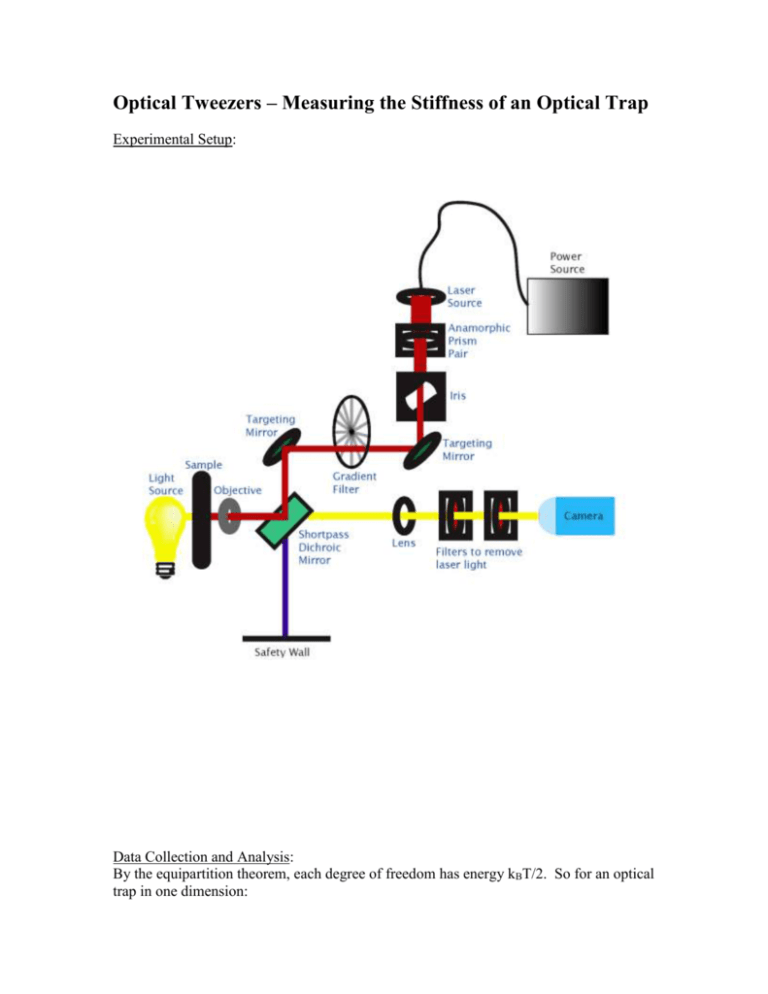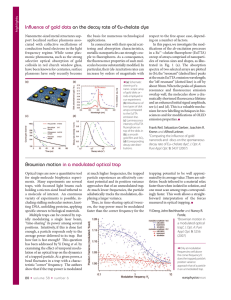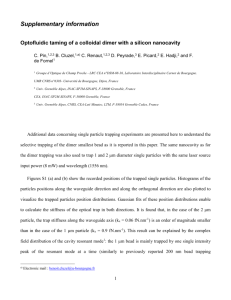Optical Tweezers
advertisement

Optical Tweezers – Measuring the Stiffness of an Optical Trap Experimental Setup: Data Collection and Analysis: By the equipartition theorem, each degree of freedom has energy kBT/2. So for an optical trap in one dimension: 1 1 k BT k x 2 2 2 where: k B Boltzmann constant = 1.38 x10 23 J/K T Temperature of medium = 300K k One-dimensional spring constant x Relative displacement from average location Relative X or Y / micron Relative X and Y as functions of time, 10-degree filter 0.25 0.20 0.15 0.10 0.05 0.00 -0.05 -0.10 -0.15 -0.20 -0.25 Relative X Relative Y 0 10 20 30 40 Time / second k x = 0.91 pN / um k y = 8.70 pN / um At the 10-degree setting of the gradient filter, there appears to be a large level of anisotropy in the spring constant of the trap, with ky about an order of magnitude greater than kx. This is visually apparent from the graph above, in which the bead’s y-position remains much closer to its average value than does the bead’s x-position. Relative X or Y / micron Relative X and Y as functions of time, 170-degree filter 0.25 0.20 0.15 0.10 0.05 0.00 -0.05 -0.10 -0.15 -0.20 -0.25 Relative X Relative Y 0 10 20 30 40 50 Time / second k x = 1.23 pN / um k y = 1.67 pN / um At the 170-degree setting of the gradient filter, there appears to be much less anisotropy in the trap’s spring constant than at the 10-degree setting. This is also clear from the graph, as the variation in relative x-position and relative y-position are more comparable.











